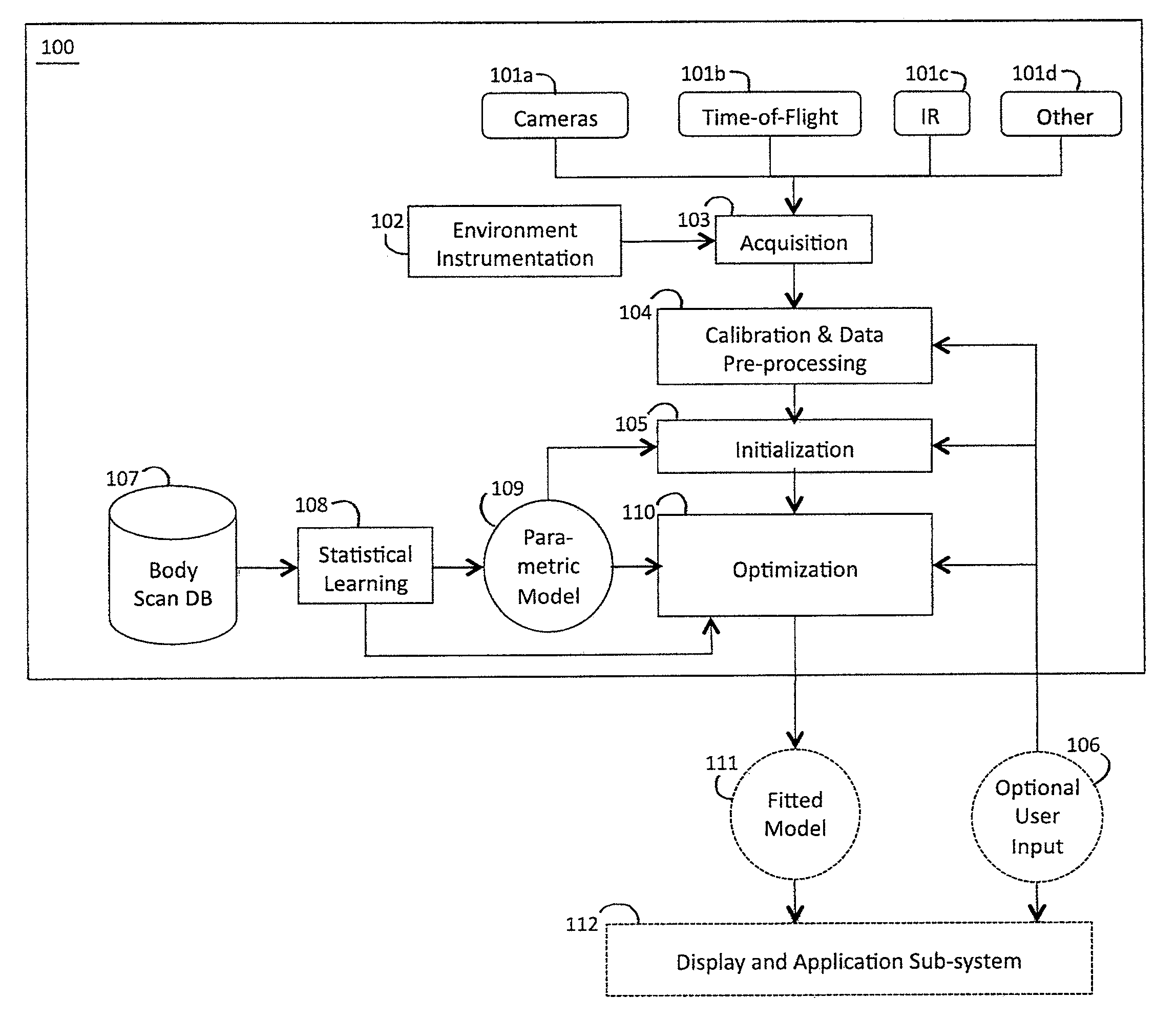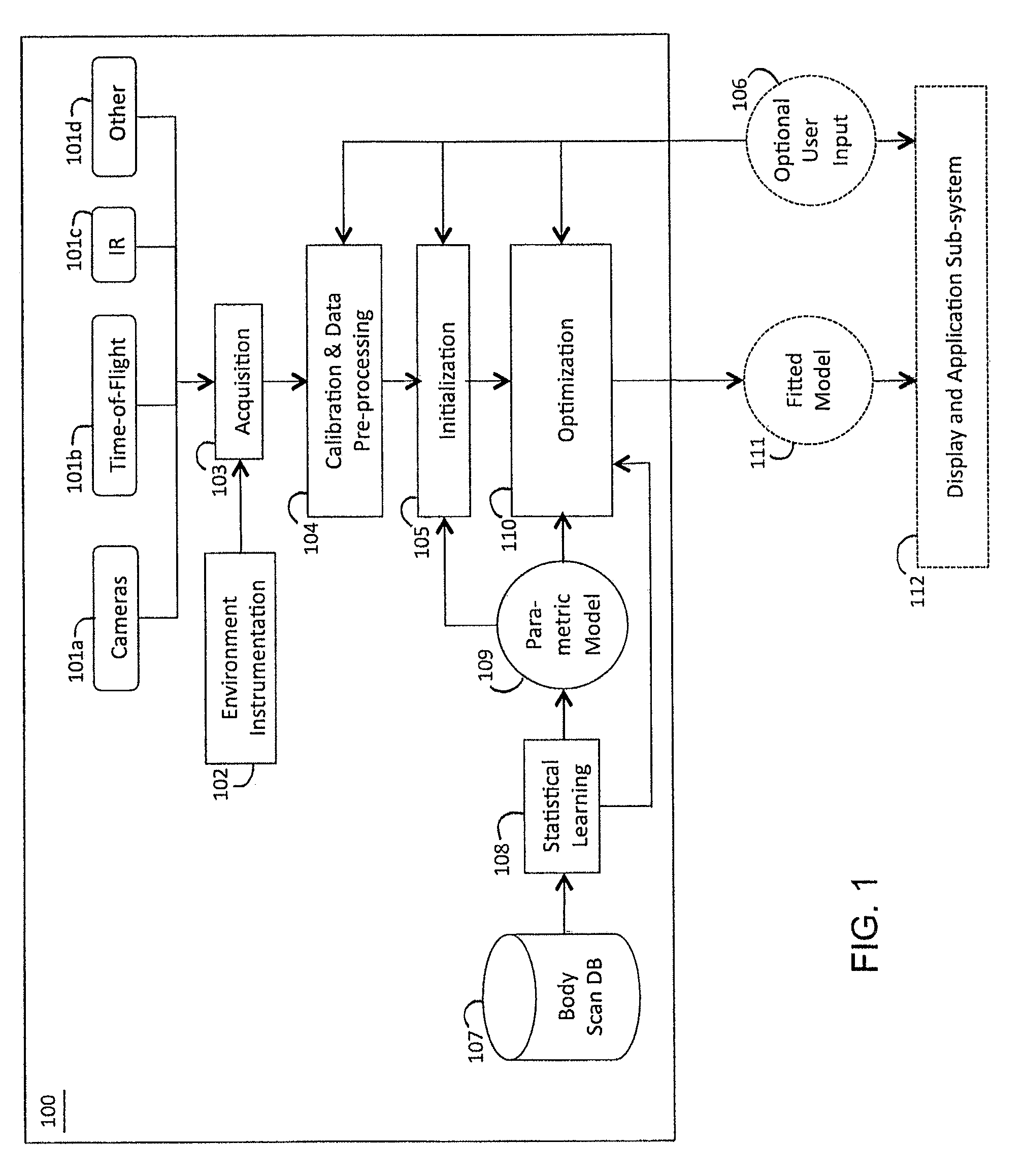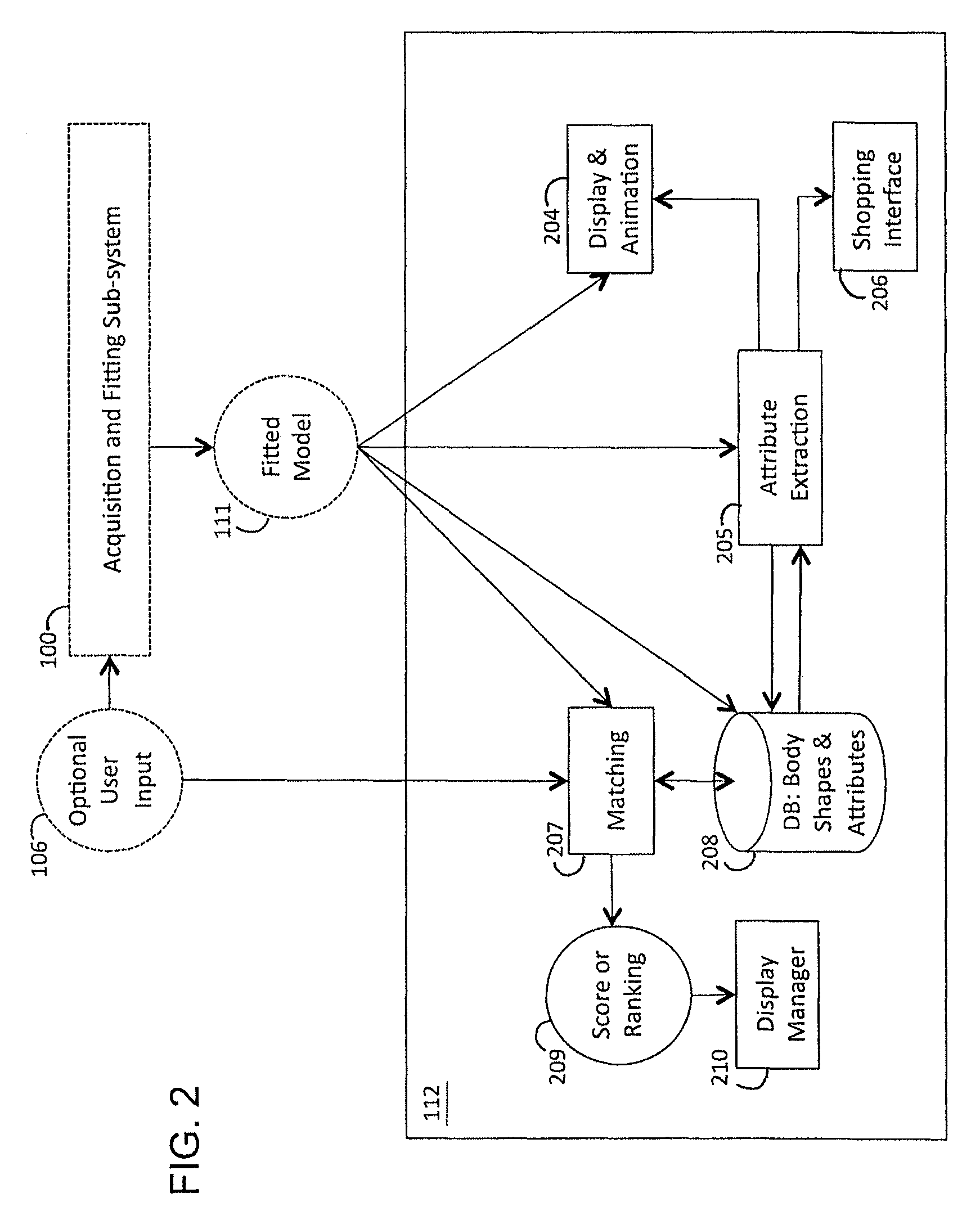Method and apparatus for estimating body shape
a body shape and body technology, applied in the field of human body shape estimation, can solve the problems of complex human body, many fewer and less accurate measurements, and often large number of vertices in the 3d mesh model of the body, and achieve the effect of less accurate measurements
- Summary
- Abstract
- Description
- Claims
- Application Information
AI Technical Summary
Benefits of technology
Problems solved by technology
Method used
Image
Examples
case 1
le Monocular Images with Changes in Pose Between Images.
[0239]Consider the situation there are two or more digital images of a person taken at different times. In the time between capturing each image the person's pose may have changed. Each image on its own provides very limited information about the shape. Consequently it would be desirable to combine information from multiple such images. A video sequence from a single camera (e.g. a surveillance camera or a movie or television show) presents an equivalent scenario.
case 2
ng that Obscures the Body.
[0240]Often it is desirable to know the shape of a person without having to have them undress or wear tight fitting clothing. Here any single pose of the body does not reveal the entire shape. This is true whether the sensor data is images or more detailed 3D data (e.g. from a laser range scanner, time of flight sensor, or structured light system). Here it is noted that as a person moves in their clothes, the way the clothes obscure the body changes—they become loose or tight on different parts of the body in different poses. By combining information from all these poses, and by using what is known about the shape of human bodies, one can estimate the most likely shape underneath the clothing.
[0241]In both cases, the presently disclosed approach relies on using a body model that factors body shape from the pose representation. Indeed it has been found that the SCAPE model provides a representation of body shape in terms of the shape coefficients β that is r...
PUM
 Login to View More
Login to View More Abstract
Description
Claims
Application Information
 Login to View More
Login to View More - R&D
- Intellectual Property
- Life Sciences
- Materials
- Tech Scout
- Unparalleled Data Quality
- Higher Quality Content
- 60% Fewer Hallucinations
Browse by: Latest US Patents, China's latest patents, Technical Efficacy Thesaurus, Application Domain, Technology Topic, Popular Technical Reports.
© 2025 PatSnap. All rights reserved.Legal|Privacy policy|Modern Slavery Act Transparency Statement|Sitemap|About US| Contact US: help@patsnap.com



